Material world: Peter Marino reflects on bronze, mythology and timeless design
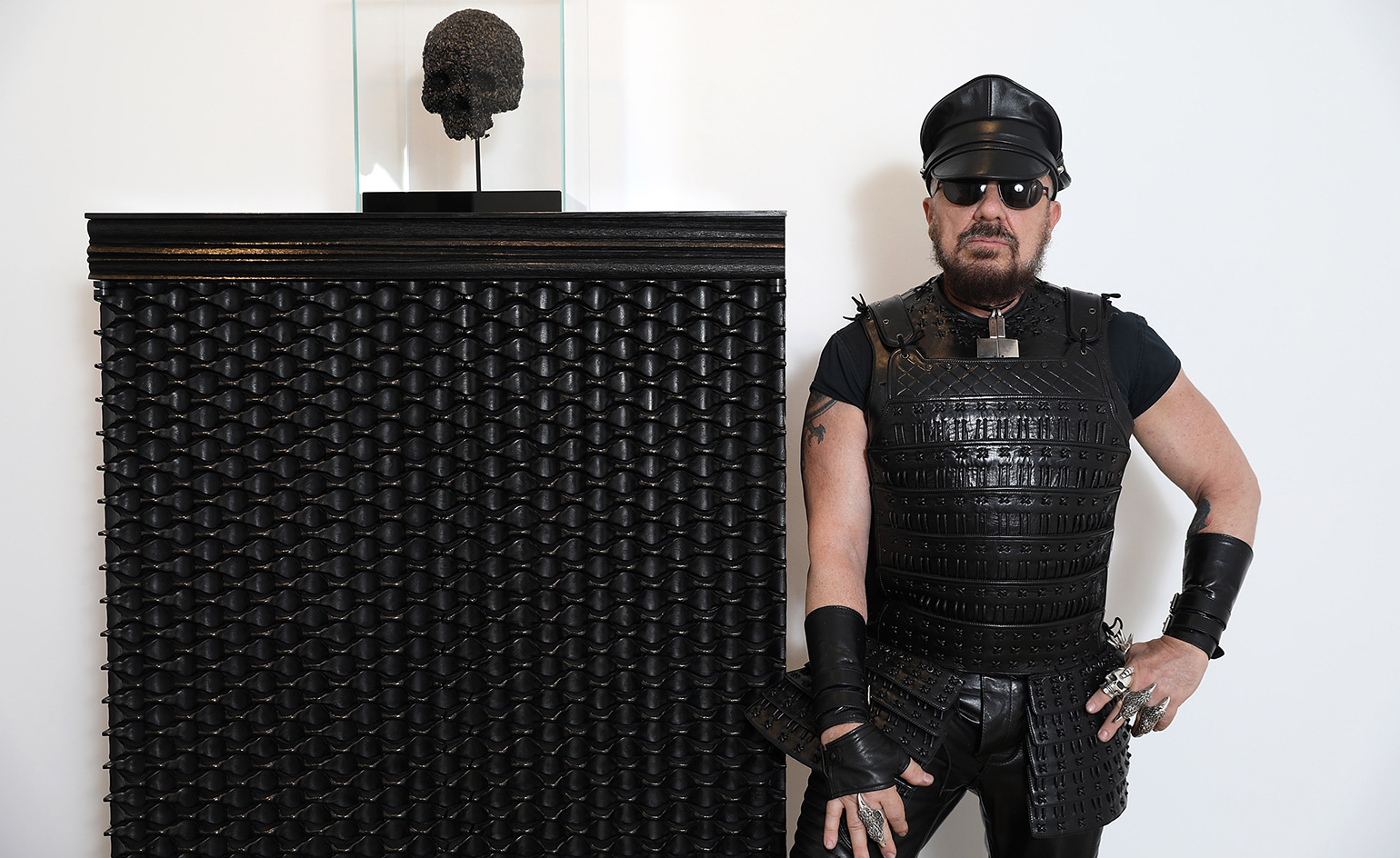
Peter Marino is continually driven to make new and long-lasting marks on the creative world. Starchitect, artist, fashion house favourite, leather-clad luminary and landscape gardener; a few of the many titles Marino has collected over an ongoing 45 year career. His art collection is just as multifaceted, including Andy Warhol paintings, historic bronze sculptures, and one of the world's largest collections of Robert Mapplethorpe photographs.
Another title to add to the list: trend-avoider. 'Trends are for people who want to get noticed. Three months later everyone is yawning,' says Marino, clad hat-to-shoe in the iconoclastic biker-gear he's known for, complete with fingerless gloves bound in the same French calf leather used for his recent pen collaboration with Caran d'Ache. Silver bird-skull rings clink on each finger. 'Maybe it’s old fashioned, but I think the end goal in design should be timelessness. IM Pei achieved it with the East Wing of the National Gallery of Washington. It has no time, no place, no nothing. That’s why it was great when it opened, it's great now, and will always be great.'
His quest for design longevity explains his predilection for bronze – a material that can last 5,000 years. He has worked with it since 2012 on three collections of functional boxes, the latest of which is currently on display at Gagosian gallery's Davies Street location. 'There was a show about the age of bronze here in London about three years ago,' Marino recalls. 'The centrepiece was a Greek statue of a dancer that they found under the ocean from 400 BC. It was essentially 2,414 years old. I was so impressed. What art really lasts the ages? Does anything we do last that long?'
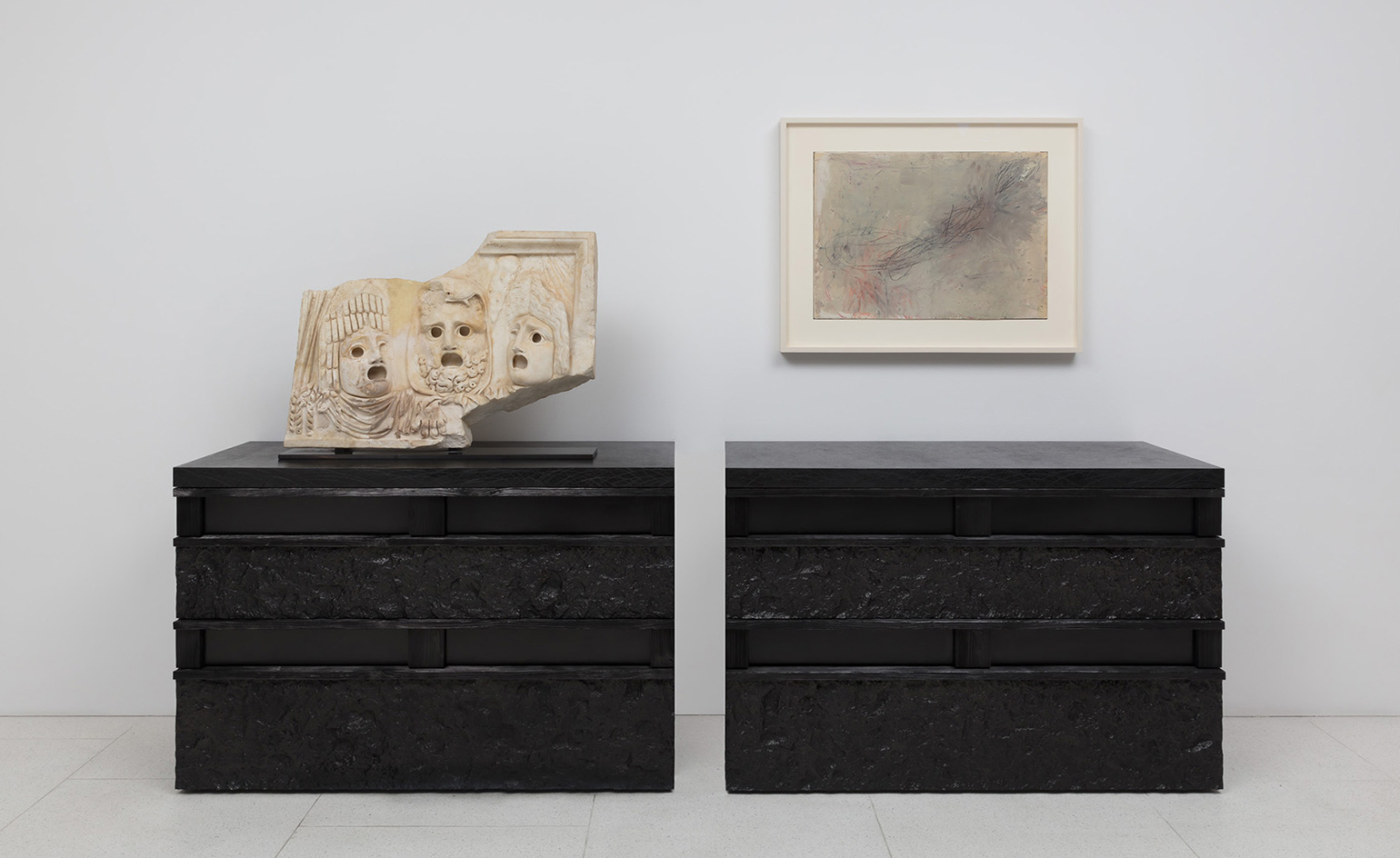
Installation view of 'Fire and Water' at Gagosian, London.
Bronze doesn't just appeal to Marino for its ability to outlive us. 'It's one of those materials that becomes more beautiful the more you touch it. It reacts to the oil in your hands, as opposed to plastic which gets scratched, or wood, that dries up and rots.'
Despite looking deep into the future, Marino's steel-toe capped shoes are firmly planted in the present. Physicality and touch are vital to his practice. He is preoccupied by texture, and the different patinas on his boxes attest to this. Charred, gilded wood gives way to undulating waves of silvered dragon scales, topped by impeccably varnished, blackened surfaces. The doors to one box bares imprint after imprint of Marino's thumb.
To the touch, such intricacies unfold themselves. From afar, the boxes are unshakable, ominous objects; some five foot tall, and just as wide. Marino calls them 'serious'. As with the previous two series (2012 and 2014 respectively), this collection was produced in France's Atelier St. Jacques, part of the Fondation de Coubertin – the French national institution for crafts and manual work. Marino describes his visit there as an 'emotional' experience. 'When I met the guys at the foundry, they were wearing hilariously long leather smocks and gloves so they don't burn. They pour out molten bronze liquid, the smoke pours everywhere – like the fourth of July. The casting is like giving birth to a work of art.'
Marino revels in the theatrical, almost mythological process, which he attributes to a childhood love of legend and storybook fantasy. 'All little boys love mythology,' he says. 'My favourite was always the "Golden Fleece". It is an enduring story. Myths are continually, universally relevant, which is why they last.'
As will these boxes. They are dateless, folkloric, and entirely untrendy. 'So often, people want to be an architect, or an artist, of their time,' says Marino. 'The higher goal, if I may, is to transcend it.'
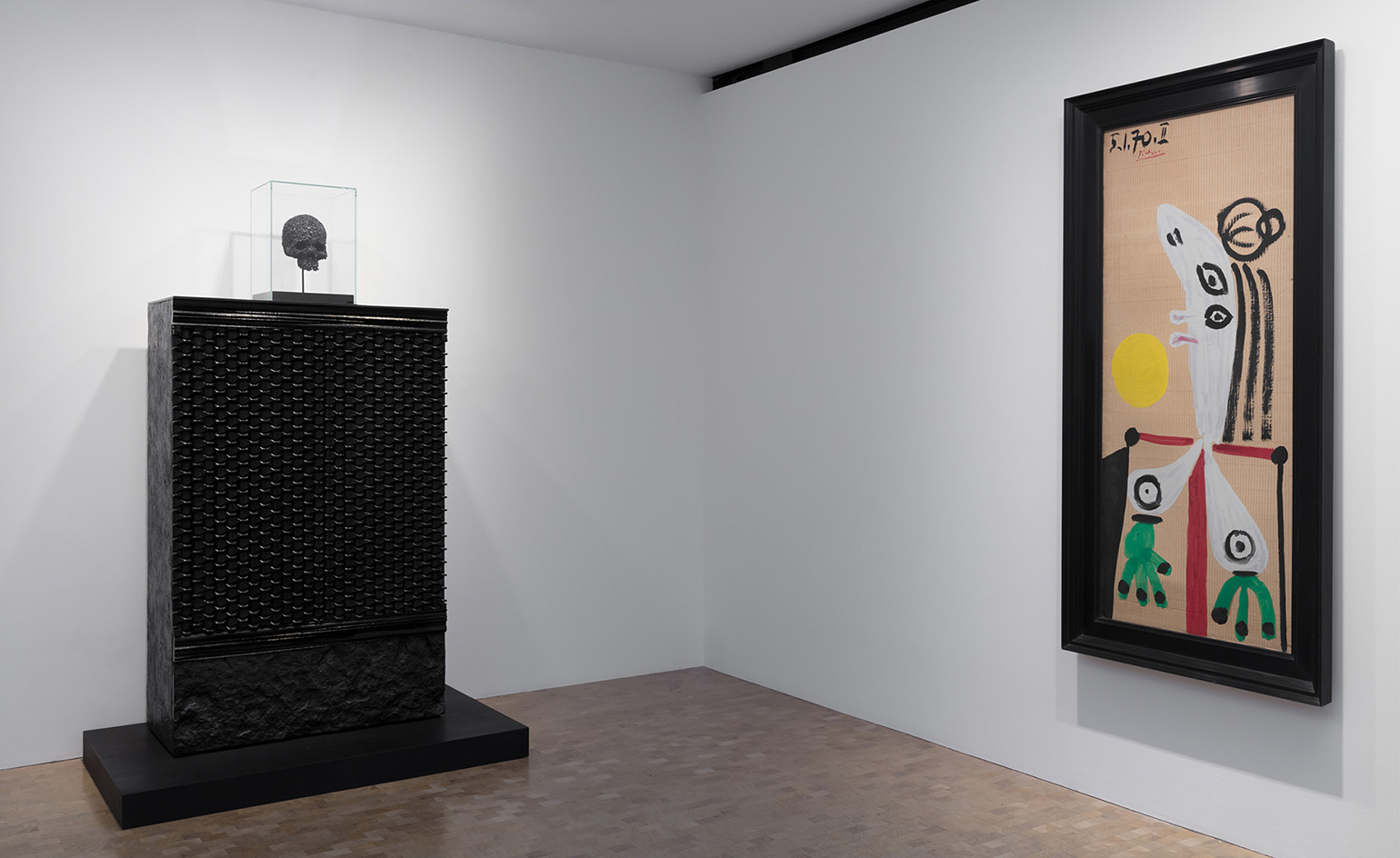
The boxes are installed amongst renowned artworks from Gagosian's collection, as curated by Marino.
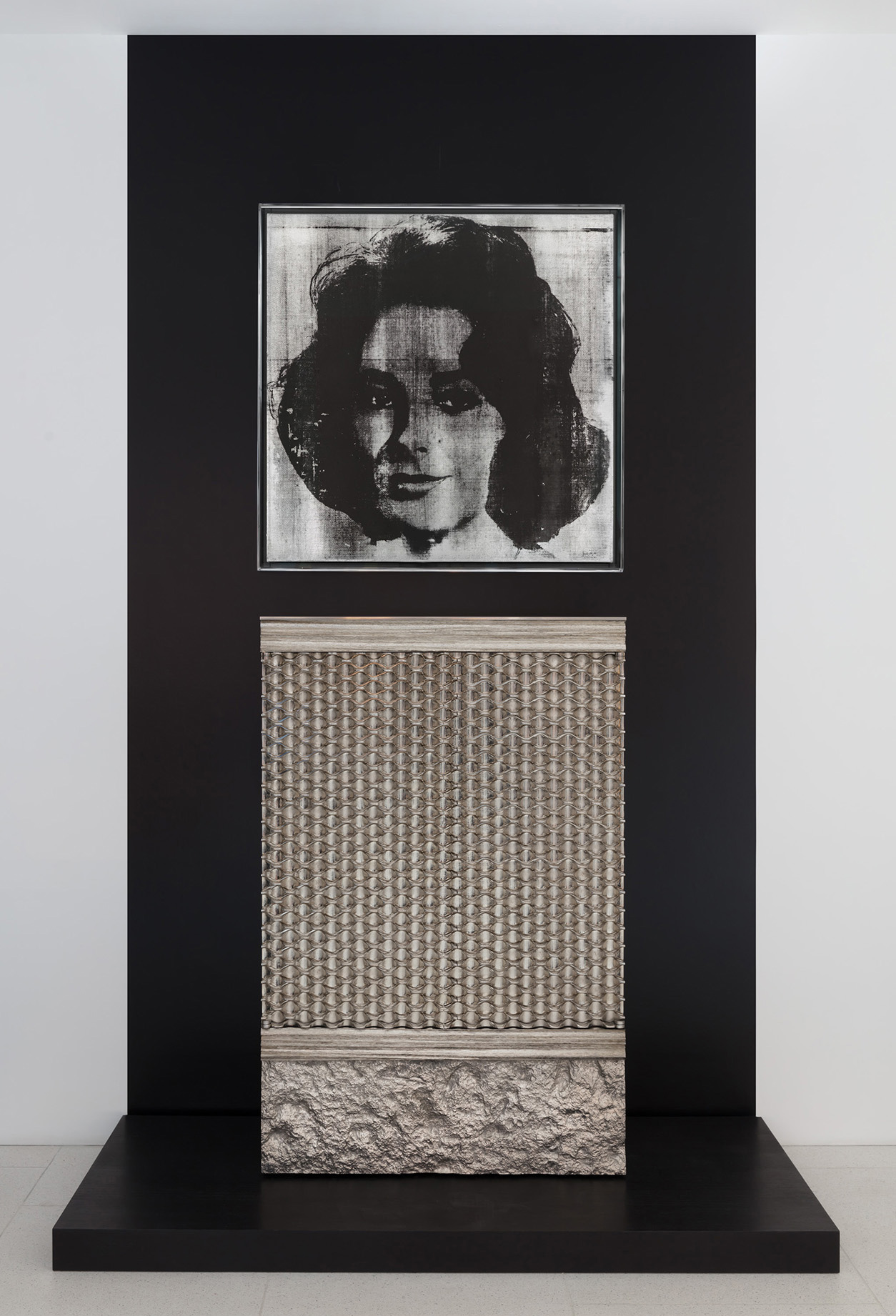
Each is rendered in a different patina: charred wood, undulating waves of silvered dragon scales, and varnished, blackened surfaces.
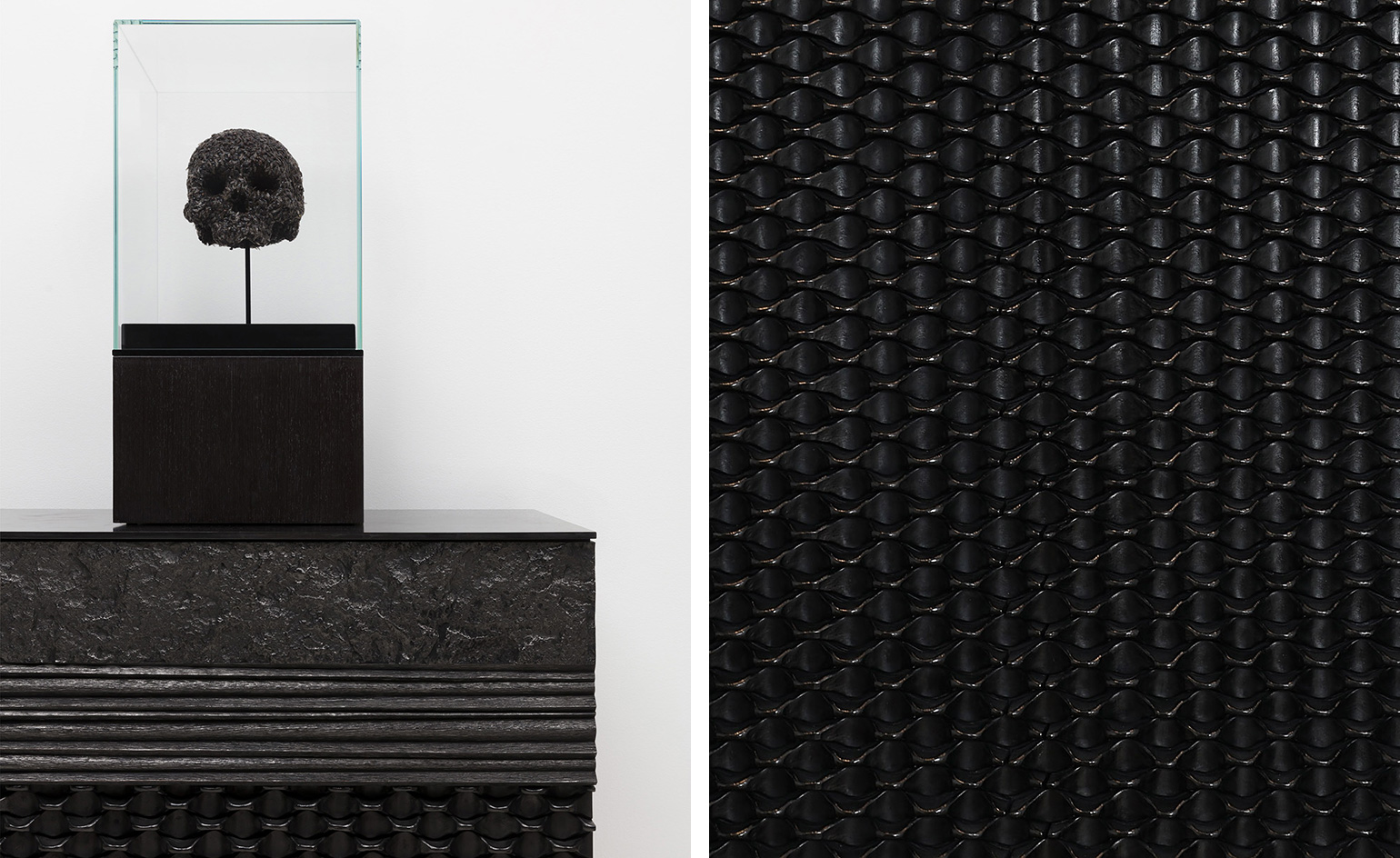
Detail view of the charred wood patina (left) and dragon scale patina.
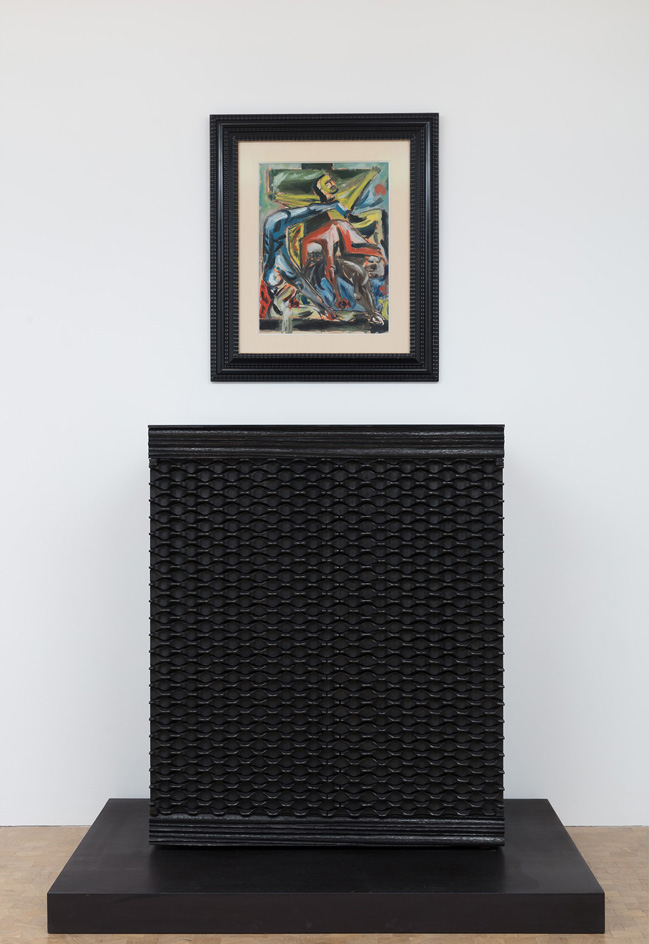
The collection was produced in France's Atelier St. Jacques, part of the Fondation de Coubertin – the French national institution for crafts and manual work.
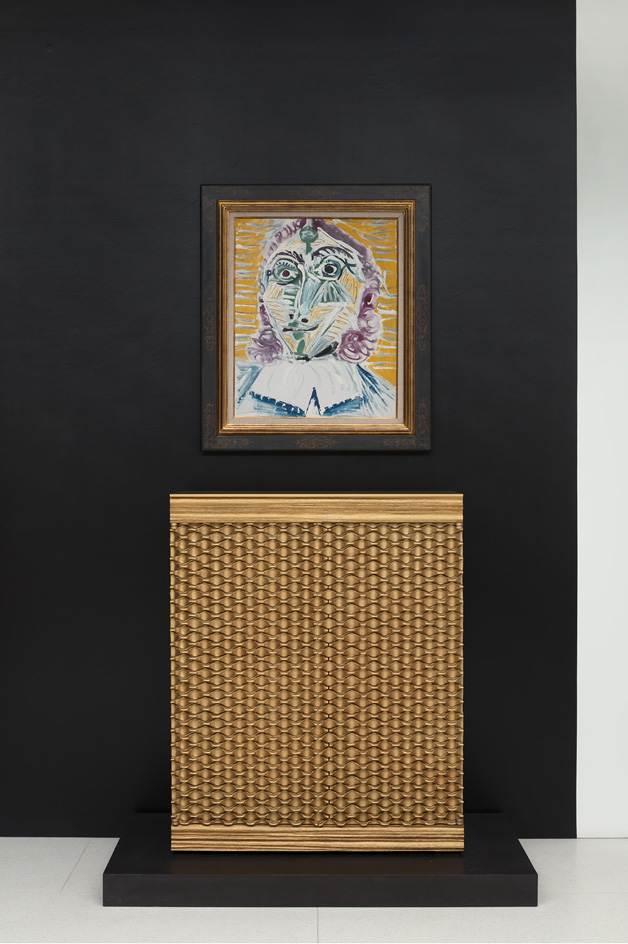
Marino has worked with bronze since 2012, as well as collecting an extensive range of bronze objects
INFORMATION
’Peter Marino: Fire and Water’ is on view until 11 August. For more information, visit the Gagosian gallery website
ADDRESS
Gagosian
17 - 19 Davies Street
London
Wallpaper* Newsletter
Receive our daily digest of inspiration, escapism and design stories from around the world direct to your inbox.
Elly Parsons is the Digital Editor of Wallpaper*, where she oversees Wallpaper.com and its social platforms. She has been with the brand since 2015 in various roles, spending time as digital writer – specialising in art, technology and contemporary culture – and as deputy digital editor. She was shortlisted for a PPA Award in 2017, has written extensively for many publications, and has contributed to three books. She is a guest lecturer in digital journalism at Goldsmiths University, London, where she also holds a masters degree in creative writing. Now, her main areas of expertise include content strategy, audience engagement, and social media.
-
 All-In is the Paris-based label making full-force fashion for main character dressing
All-In is the Paris-based label making full-force fashion for main character dressingPart of our monthly Uprising series, Wallpaper* meets Benjamin Barron and Bror August Vestbø of All-In, the LVMH Prize-nominated label which bases its collections on a riotous cast of characters – real and imagined
By Orla Brennan
-
 Maserati joins forces with Giorgetti for a turbo-charged relationship
Maserati joins forces with Giorgetti for a turbo-charged relationshipAnnouncing their marriage during Milan Design Week, the brands unveiled a collection, a car and a long term commitment
By Hugo Macdonald
-
 Through an innovative new training program, Poltrona Frau aims to safeguard Italian craft
Through an innovative new training program, Poltrona Frau aims to safeguard Italian craftThe heritage furniture manufacturer is training a new generation of leather artisans
By Cristina Kiran Piotti
-
 ‘Humour is foundational’: artist Ella Kruglyanskaya on painting as a ‘highly questionable’ pursuit
‘Humour is foundational’: artist Ella Kruglyanskaya on painting as a ‘highly questionable’ pursuitElla Kruglyanskaya’s exhibition, ‘Shadows’ at Thomas Dane Gallery, is the first in a series of three this year, with openings in Basel and New York to follow
By Hannah Silver
-
 The art of the textile label: how British mill-made cloth sold itself to Indian buyers
The art of the textile label: how British mill-made cloth sold itself to Indian buyersAn exhibition of Indo-British textile labels at the Museum of Art & Photography (MAP) in Bengaluru is a journey through colonial desire and the design of mass persuasion
By Aastha D
-
 Artist Qualeasha Wood explores the digital glitch to weave stories of the Black female experience
Artist Qualeasha Wood explores the digital glitch to weave stories of the Black female experienceIn ‘Malware’, her new London exhibition at Pippy Houldsworth Gallery, the American artist’s tapestries, tuftings and videos delve into the world of internet malfunction
By Hannah Silver
-
 Ed Atkins confronts death at Tate Britain
Ed Atkins confronts death at Tate BritainIn his new London exhibition, the artist prods at the limits of existence through digital and physical works, including a film starring Toby Jones
By Emily Steer
-
 Tom Wesselmann’s 'Up Close' and the anatomy of desire
Tom Wesselmann’s 'Up Close' and the anatomy of desireIn a new exhibition currently on show at Almine Rech in London, Tom Wesselmann challenges the limits of figurative painting
By Sam Moore
-
 A major Frida Kahlo exhibition is coming to the Tate Modern next year
A major Frida Kahlo exhibition is coming to the Tate Modern next yearTate’s 2026 programme includes 'Frida: The Making of an Icon', which will trace the professional and personal life of countercultural figurehead Frida Kahlo
By Anna Solomon
-
 A portrait of the artist: Sotheby’s puts Grayson Perry in the spotlight
A portrait of the artist: Sotheby’s puts Grayson Perry in the spotlightFor more than a decade, photographer Richard Ansett has made Grayson Perry his muse. Now Sotheby’s is staging a selling exhibition of their work
By Hannah Silver
-
 From counter-culture to Northern Soul, these photos chart an intimate history of working-class Britain
From counter-culture to Northern Soul, these photos chart an intimate history of working-class Britain‘After the End of History: British Working Class Photography 1989 – 2024’ is at Edinburgh gallery Stills
By Tianna Williams